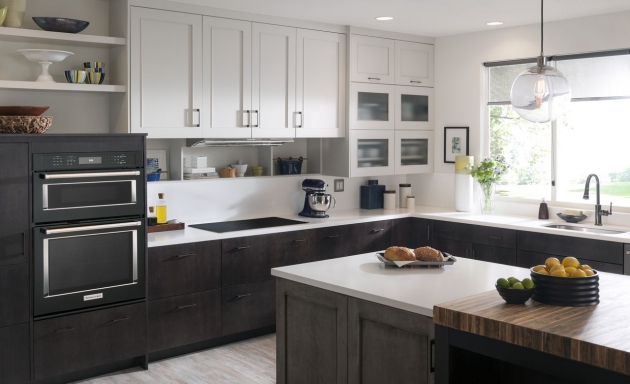In today’s hectic lifestyle, being able to heat food quickly can be a massive advantage in any home. While the typical go-to for quickly heating food is a microwave, many people are now considering speed ovens, but what’s the difference? Here we’ll explore the differences and similarities between these two appliances to help you make an informed purchase decision for your home.
The Microwave Basics:
As the name suggests, microwave ovens use microwaves, which is a type of electromagnetic energy to heat the food. This energy causes the water molecules in the food to vibrate, which generates heat and as a result, cooks the food.
Microwaves can reheat or cook food in a fraction of the time needed for a traditional stovetop or oven. These appliances are available in various styles and sizes, providing a convenient and time saving solution in practically any kitchen.
The Speed Oven Basics:
Speed ovens are a combination of traditional ovens and microwaves. They use both microwave technology and convection heating to evenly and quickly cook food. The convection heating has a fan to circulate the hot air around the food, promoting crispiness and browning, while the microwave technology heats the food from the inside out.
This combination allows faster cooking compared to a traditional oven, but you can still achieve the same level of crisping and browning.
The Key Differences Between Speed Ovens and Microwaves:
As we just covered, while there are some similarities between speed ovens and microwaves, there are some important differences. These include:
The Cooking Method:
We touched on this above, but while microwaves use microwave technology, speed ovens use a combination of microwave and convection heating technologies. This difference means that a speed oven can brown and crisp food, while microwaves cannot.
Additionally, the combined cooking method of speed ovens mean that food cooks far more quickly than with a traditional oven, yet offers similar results.
Cooking Options:
Since speed ovens have convection technology built in, it allows cooking using various methods including broiling, roasting, grilling and baking. You can use a speed oven to prepare a variety of dishes including grilled vegetables, roasted meats and even dishes such as lasagna.
Microwaves tend to be far more limited. They are mainly used for quick cooking and reheating, such as making popcorn, reheating leftovers and cooking frozen meals. While they tend to have a defrost option, since they cannot brown and crisp foods, they are not designed for baking, grilling, roasting and broiling.
Capacity:
Speed ovens tend to have a larger capacity compared to microwaves. The overall appliance tends to be bigger, which means that they can prepare greater quantities of food. Some speed ovens are specifically designed to be built into walls or cabinetry, which means that they tend to require more space in your kitchen.
On the other hand, microwaves are available in a variety of styles and sizes from large built in models down to small countertop models. This makes them more flexible if you have limited kitchen space.
Price:
Finally, price is a key difference between speed ovens and microwaves. Speed ovens have more advanced features and greater cooking options, which is reflected in their price. Microwaves are generally less expensive, but the specific cost depends on the brand, model, size and features.
Which is Best?
Whether a speed oven or microwave is best will depend on your preferences, requirements and kitchen. If you’re a seasoned chef who cooks lots of meals and has plenty of space in your kitchen, a speed oven could be a good choice. On the other hand, if you simply need an appliance to reheat food and drinks, you would be better suited to a microwave.
If you’re considering a speed oven, you can explore your options with our online collection or speak to one of our home appliance specialists for further help and guidance.

